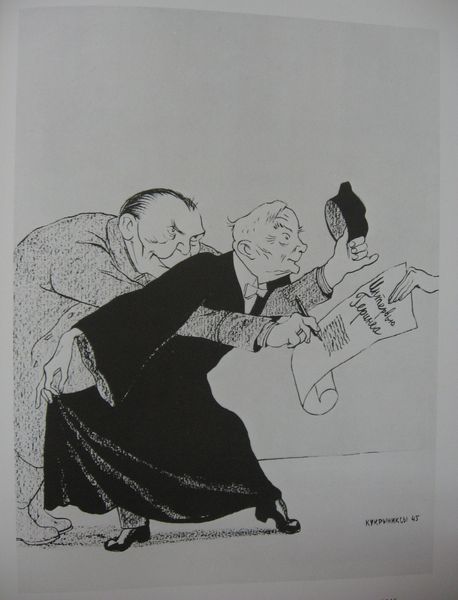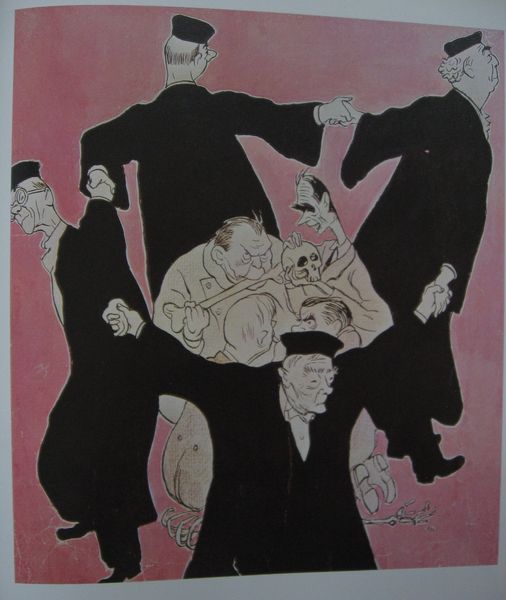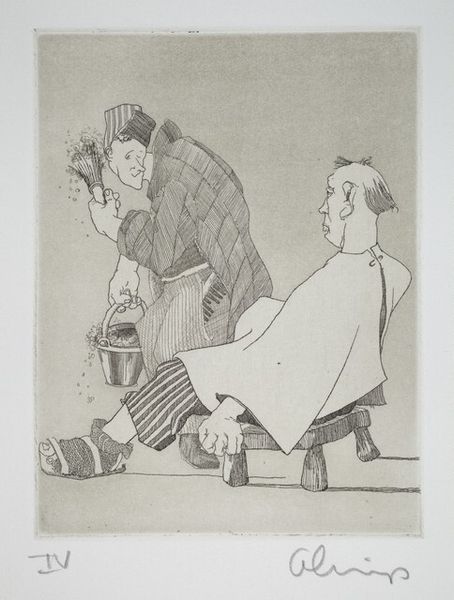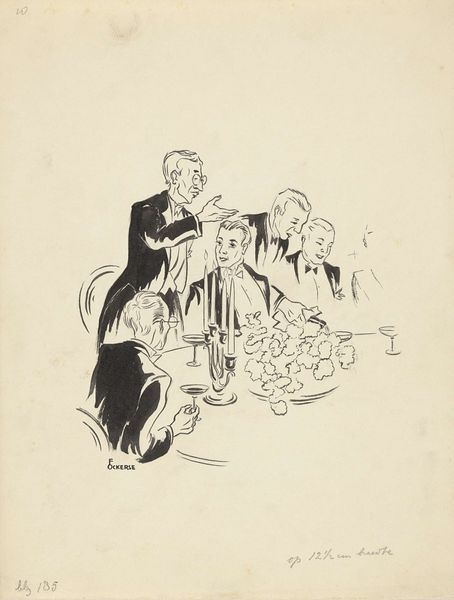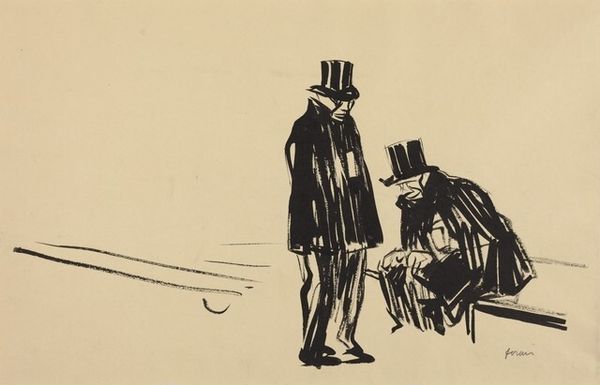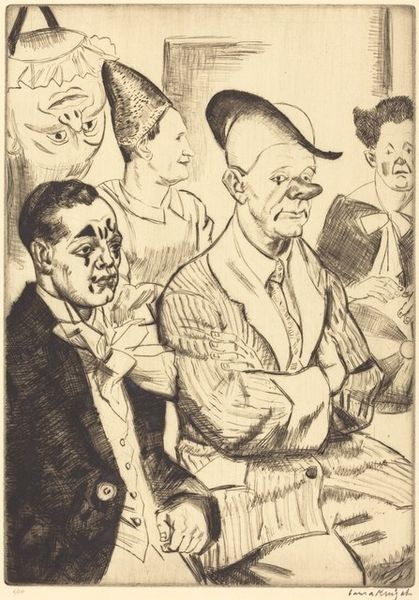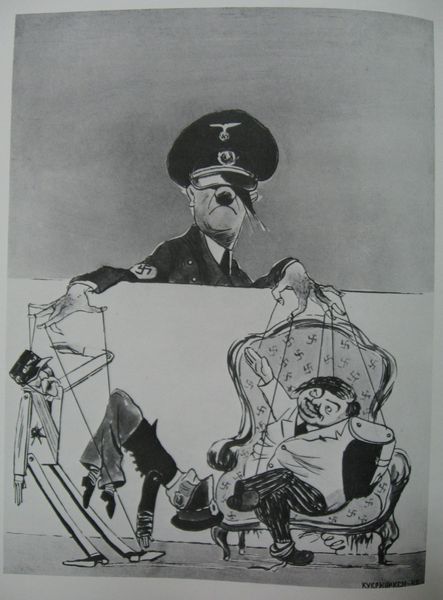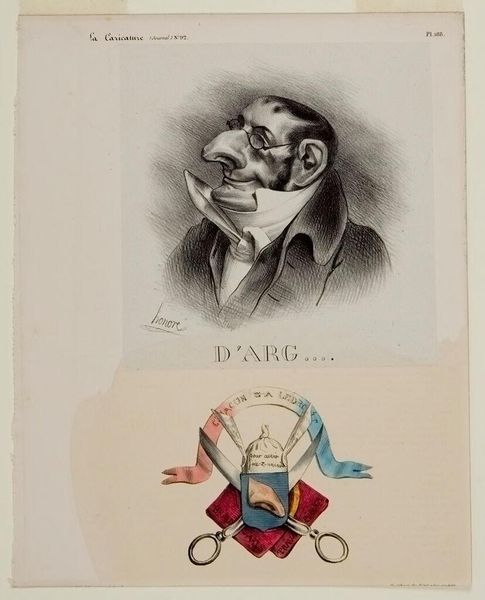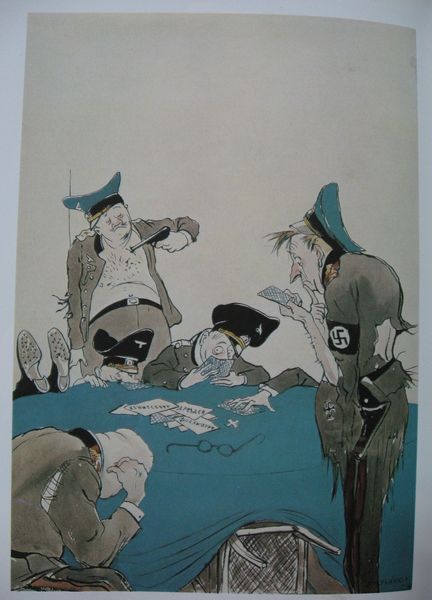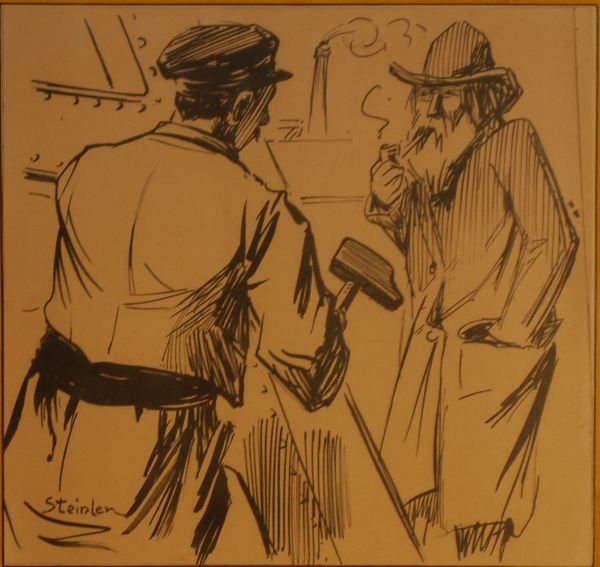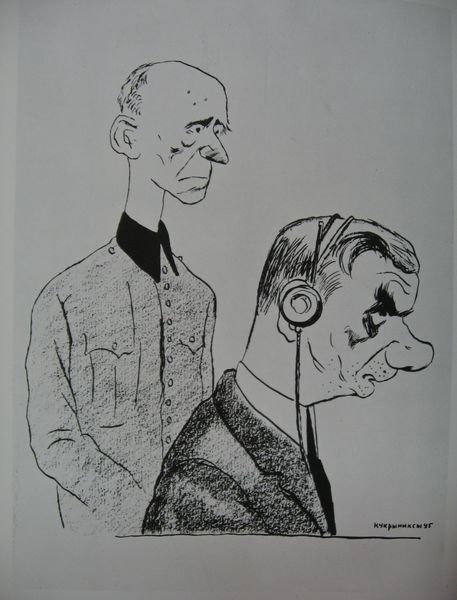
drawing, graphite, pen
#
portrait
#
drawing
#
imaginative character sketch
#
quirky illustration
#
cartoon based
#
quirky sketch
#
caricature
#
junji ito style
#
cartoon sketch
#
figuration
#
wedding around the world
#
intimism
#
sketch
#
graphite
#
pen
#
cartoon style
#
cartoon carciture
#
fantasy sketch
#
modernism
Copyright: Ivan Eyre,Fair Use
Curator: I find this untitled work by Ivan Eyre, which we’ve designated “Study for High C”, particularly arresting. The forms, seemingly rendered with graphite and pen, occupy an ambiguous space, hovering somewhere between the representational and the utterly surreal. Editor: My first thought is…unsettling. There's a visceral quality to the figures, an almost grotesque distortion that makes me deeply uncomfortable yet compels me to keep looking. What do you make of these doubled heads? Curator: The doubled heads certainly carry significant symbolic weight. Given Eyre's wider practice, steeped as it often is in Jungian archetypes, they evoke ideas around the fragmented self, the conscious and unconscious struggling for dominance within a single entity. Note the stark contrast in tone – one almost monochrome and one bursting with pigment – as though one figure suppresses the other. Editor: It also brings to mind the historical role of caricature, of playing with and distorting the human form to satirize or critique power structures, a long artistic tradition. It begs the question: what exactly is being critiqued, what cultural moment are these contorted visages capturing? Curator: I believe Eyre probes more personal anxieties. He’s not concerned here with broad societal critique but, rather, with the internal conflicts and the hidden faces we all possess. These images tap into a cultural memory of grotesque forms meant to repel but instead reflecting inner turmoil. Editor: Even if Eyre's intentions were focused inward, isn’t the artwork's reception inextricably tied to wider cultural trends? In my view, it will be shown in galleries, collected, and inevitably become part of the grand narrative that is visual art, even if it was not consciously intended as a political statement. Curator: Agreed, and museums clearly participate in canonizing individualistic art, shaping what society remembers and values, and there are often inherent sociopolitical elements no artist can divorce from their vision. But, the raw, unnerving quality here speaks, I think, more deeply to timeless aspects of the human condition: self-doubt, alienation, and inner conflict. Editor: An astute point. Seeing Eyre wrestle with interiority does provide an opportunity for reflection on societal roles shaping those interiors. Regardless, "Study for High C” offers ample ground for contemplation. Curator: Precisely. Its ambiguity allows each of us to find within its lines a mirror reflecting our own unique psychological landscapes.
Comments
No comments
Be the first to comment and join the conversation on the ultimate creative platform.
